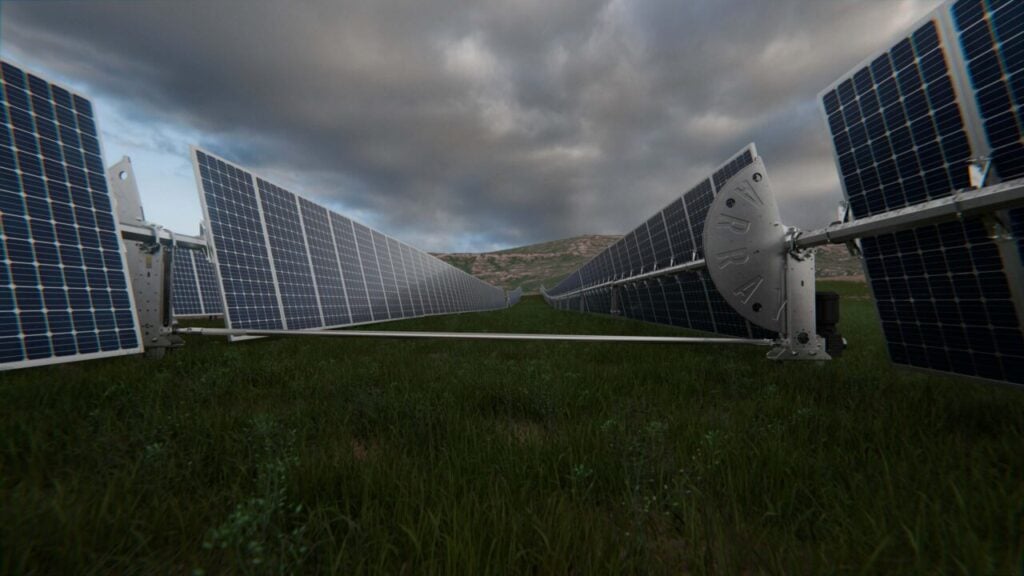
US solar tracker manufacturer Array Technologies has unveiled its latest tracker, designed for use in regions prone to high wind speeds and significant hailstorms.
The DuraTrack Hail XP tracker, the latest in the company’s DuraTrack range, allows PV modules to be stowed at an incline of 77 degrees, to better protect modules from falling hailstones. The system was first teased at last September’s RE+ event in California, when Array said its upcoming 77 degree stowing system would generate an average energy gain of 5% compared to other trackers.
Try Premium for just $1
- Full premium access for the first month at only $1
- Converts to an annual rate after 30 days unless cancelled
- Cancel anytime during the trial period
Premium Benefits
- Expert industry analysis and interviews
- Digital access to PV Tech Power journal
- Exclusive event discounts
Or get the full Premium subscription right away
Or continue reading this article for free
The company also highlighted the tracker’s reliability, describing “a reinforced bearing housing, larger gear rack and upgraded damper” as key components. Array plans to make its latest trackers available for delivery in the first quarter of 2026.
The news follows Array’s launch of other new products in the tracker industry, such as its wireless tracker system SkyLink. There is growing interest in the tracker space specifically, and solar PV project resilience more broadly. Last year, US insurer kWh Analytics and the US Department of Energy announced a US$2.4 million initiative to research new ways to improve the resilience of PV projects, particularly those in regions prone to high-risk weather.
At this year’s Intersolar Europe event in Munich, researchers from the International Energy Agency (IEA) Photovoltaic Power Systems Programme (PVPS) pointed out that, due to climate change, “extreme weather events” had become five to 17 times more frequent than historical projections, highligtng the growing importance of effective extreme weather management at solar projects.
Marcel Suri, CEO of Solargis, has written for PV Tech on this very topic. Earlier this year, he argued that the collection and use of higher-quality data and deployment of smarter, more interconnected operations has become a priority for solar asset management in an era of rapid climate change.






